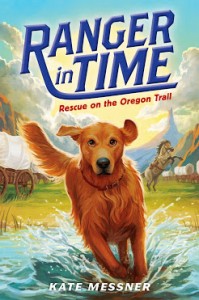 Why I Picked It Up: This book had two different things to recommend it to me. We tend to read either YA novels or picture books, and so we’ve been looking for younger elementary chapter books. We are also getting ready for the upcoming Texas Council for the Social Studies Conference at the end of the month, and so we are also looking for books that have a historical context for the young elementary crowd. I really enjoyed Kate Messner’s Capture the Flag, and I had seen this new series on Kate Messner’s blog post where she announced a really cool summer writing program for teachers, made a mental note to check it out and then lost the note somewhere along the way. While we were at ILA this summer, we happened to get a copy of this very book, and it was even signed by the author! (This is Kate and me, and one of her latest books, which is also on my “to read” list!)
Why I Picked It Up: This book had two different things to recommend it to me. We tend to read either YA novels or picture books, and so we’ve been looking for younger elementary chapter books. We are also getting ready for the upcoming Texas Council for the Social Studies Conference at the end of the month, and so we are also looking for books that have a historical context for the young elementary crowd. I really enjoyed Kate Messner’s Capture the Flag, and I had seen this new series on Kate Messner’s blog post where she announced a really cool summer writing program for teachers, made a mental note to check it out and then lost the note somewhere along the way. While we were at ILA this summer, we happened to get a copy of this very book, and it was even signed by the author! (This is Kate and me, and one of her latest books, which is also on my “to read” list!)
Why I Finished It: It was really easy to finish this one. With only 125 pages, it only took an hour or so, and though the story is fairly simple (as one would expect from a book for younger readers), it’s not lacking in detail, depth and interest. I was also intrigued by the character of Ranger, the rescue dog who failed his test because he kept getting distracted by squirrels. He goes back in time and gets to use his rescue training in an historical context. With books about the Oregon Trail, you usually get one of two options: either the family makes it safe and sound to the Oregon Territory and their new life, or they die along the way. The conditions on the trail were hard, and Messner does a good job of communicating that, while still being sensitive to younger readers. I was interested to see how the two options I’ve come to expect would play out in this book, and I found the ending to be satisfying, yet not wrapped up too neatly as to seem unreal.
Who I Would Give It To: I think 2nd or 3rd grade might be the sweet spot for this one, but I think a 4th or 5th grader would still enjoy reading it. It seems like it would be great for fans of the Magic Treehouse series, or even the “I Survived” series, as well.
Integration Ideas
Point-of-View and Sensory Details
The book is “written in third person, and goes back and forth from Ranger’s dog-centered point of view to the point of view of the main character in the historical setting”(from this blog post). In her post, Messner talks about the different kinds of things you have to consider when a dog is narrating or describing something. What kinds of details would a dog notice? Dogs can’t see color, so there won’t be any colors mentioned. But Ranger is also a dog from the future, so what kinds of connections is he going to make between the things that surround him in the past and his life in our present? This prompt comes from Messner’s blog post: Bring Ranger back in time to whatever period in history you’re studying at the time. How would a dog from our world describe the smells, sights, and sounds of Revolutionary War battle or a ship full of immigrants bound for the New World?
Messner’s book is full great descriptions that you could share with the students before they begin writing their own, or to have them analyze for sensory details: 16-17, 49, 52, 60, 76-77 (paragraphs about the cave). Many of the descriptions include smells, since a dog’s sense of smell is very strong, and it’s amazing how much more you feel like you’re there when you can connect to the smells (see page 106 for just one of many examples).
Have the students include details from all five senses, making sure to pay particular attention to the ones that might be slightly different for a dog. To help them think about the senses, have the students hold up their hands. Tell them to: “Put your thumb on your ear. Your pointer finger on your eye, your middle finger on your nose, your ring finger on your lips, and your pinkie on your chin.” It’s fun to show the students this way, because in case they forget later, their hand will remind them what the senses are.
Technology
I can’t talk about a book about the Oregon Trail without mentioning the Oregon Trail game. Does anyone even remember that any more?? I’m sure today’s students don’t! At this point, however, they would probably consider it “vintage” and it just might be cool again!
Did you know that you could play it online?? Yes, you can now relive your childhood and travel the Oregon Trail in all its MS-DOS interface glory, but form the comfort of your own laptop! I spent more time than I probably should have “trying it out” today, and I had so much fun! Do these screens look familiar to anyone?
Here’s the link: https://archive.org/details/msdos_Oregon_Trail_The_1990
While the game is enjoyable, there are definitely educational connections in several areas. The science, technology, and society strand of the Texas social studies standards talks about the impact of innovations and technology. Talk about this game and its impact, and compare it to today’s games. Talk about how technology has changed, particularly the input options and graphics. In the book, they mention a “roadometer” on page 37. Talk about that as a piece of technology, how it was an innovation and how it affected the lives of the pioneers.
You could start talking about programming and coding and having students study this game from that perspective.
Of course there’s the historical angle. As I was playing this game, I made many connections to things from the book: I had to choose when to leave Independence, MO, just like Sam and his family did. I had to get supplies, just like Sam’s family did. I passed Chimney Rock, and it had a little more meaning after reading about it in the story. When I forded a river in the game, I could see the scene in the book where Pa almost drowned and it was a little more real.
I didn’t do as well as Sam’s family in my game, but I definitely feel like this game could be a fun companion to the book. It would be really fun to play as a class after we’ve read this book, and maybe studied the time period. We could make decisions as a group and enjoy it all together!
You could also map Sam and his family’s journey, the landmarks they see, the events that happen, in a Google Map.
Here’s an example: https://www.google.com/maps/d/u/0/viewer?mid=zCCZvka6stfY.kbvNZPwv8VXw&hl=en_US
Research
At the end of the book, Messner does her due diligence and talks about the facts, what’s true and what isn’t in the story. She shares some of her research process with us there as well. You can read even more about it in this blog post. This time period would definitely demand some background knowledge for many of our students, and so you could spend some time researching by visiting a few of these websites:
National Frontier Trail’s Museum: http://www.ci.independence.mo.us/NFTM/JustForKids
The Bureau of Land Management’s Oregon Trail Interpretive Center: http://www.blm.gov/or/oregontrail/
Fort Laramie: http://www.nps.gov/fola/index.htm
Writing – RAFT
RAFT is a writing structure that stands for Role, Audience, Format, and Topic. When assigning RAFTs, the teacher can give each component or the student can have some freedom to develop their own. When students write RAFTs, it is a little bit about the composition, but mostly about the higher level thinking required to complete the assignment. Suppose you tell students that they are a pioneer (role) writing a letter (format) to friends back home (audience) persuading them to move west (topic), what would the students gain from this writing assignment? Not only will they have to put themselves in the moment, but they will need specific facts about the time period. Check out the Writing Fix for lots of great RAFT ideas. http://writingfix.com/WAC/Writing_Across_Curriculum_RAFTS_Soc_Studies.htm

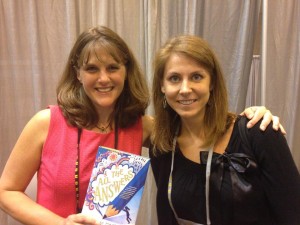
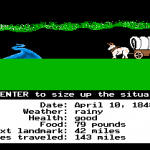
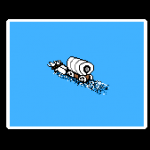
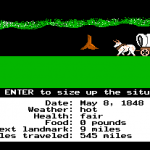
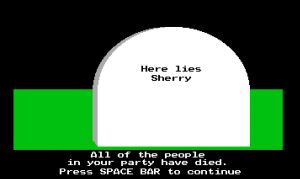





Thanks so much. This is a great idea for 2nd grade.
My 2nd grader LOVED this book!